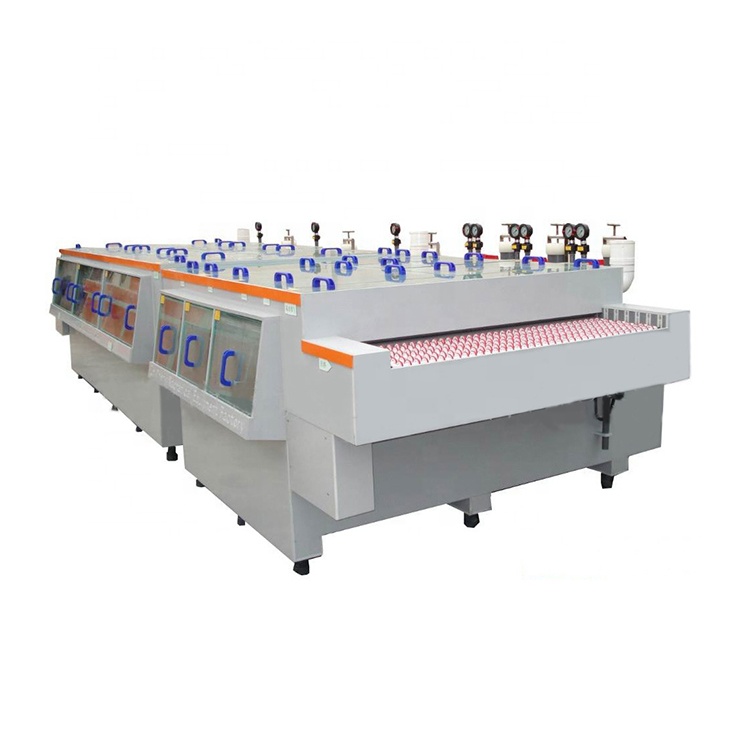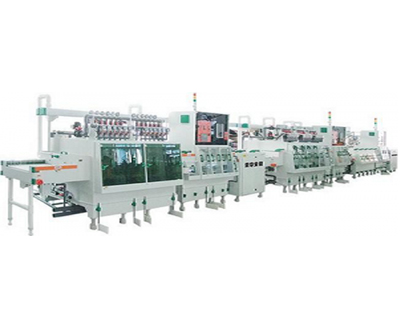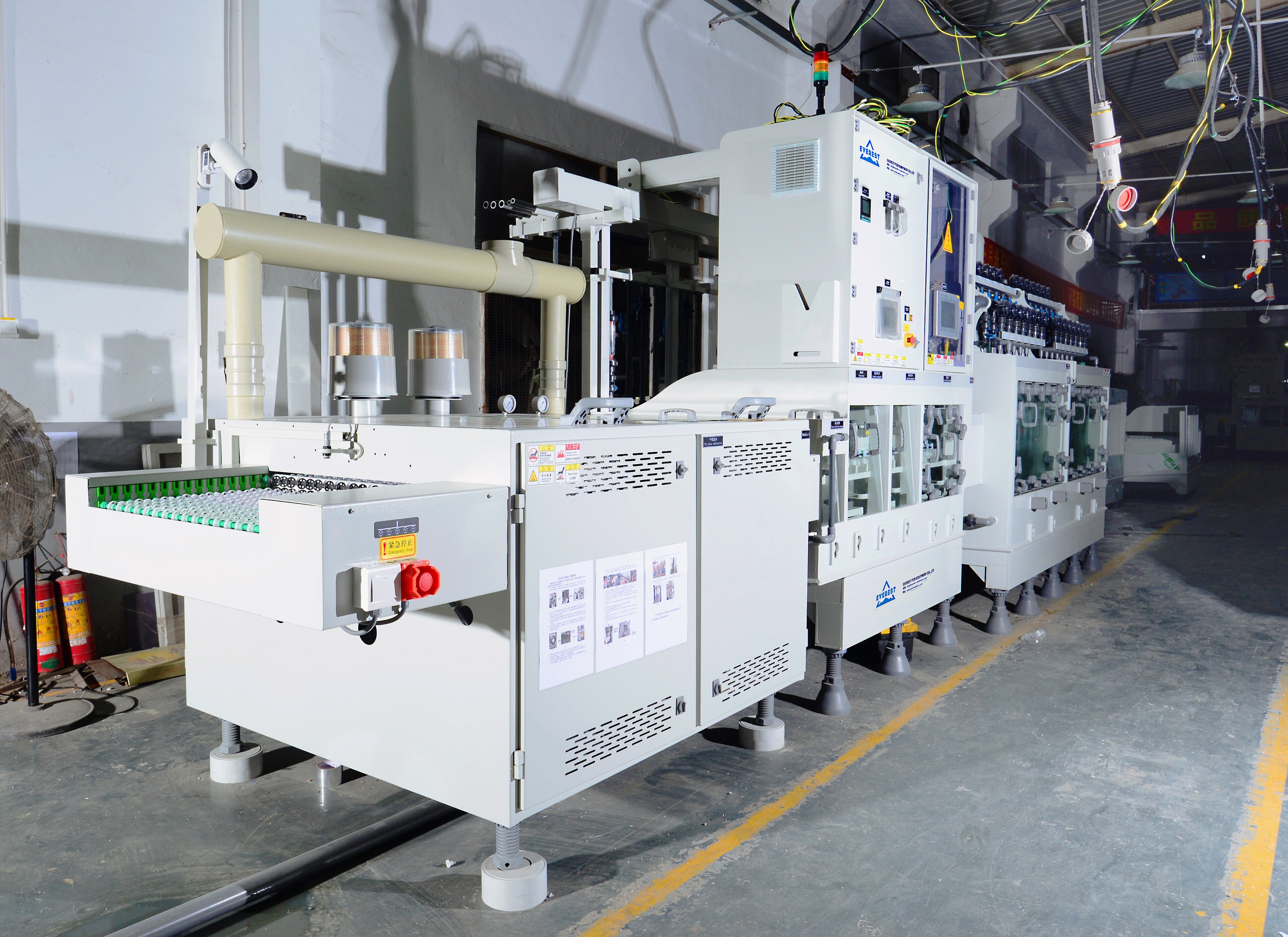The process of printed circuit board from optical board to displaying circuit pattern is a relatively complex physical and chemical reaction process. This paper analyzes the last step – etching. At present, the typical process of printed circuit board (PCB) processing is “pattern plating”. That is, a layer of lead tin anti-corrosion layer is pre plated on the copper foil part to be retained on the outer layer of the board, that is, the graphic part of the circuit, and then the rest of the copper foil is chemically corroded, which is called etching.
Type of etching:
It should be noted that there are two layers of copper on the board when etching. In the outer layer etching process, only one layer of copper must be completely etched, and the rest will form the final required circuit. This type of pattern electroplating is characterized by the fact that the copper plating layer only exists below the lead tin corrosion resistant layer.
Another process is that the whole board is plated with copper, and the part outside the photosensitive film is only tin or lead tin corrosion resistant layer. This process is called “full board copper plating process”. Compared with pattern plating, the biggest disadvantage of copper plating on the whole board is that copper must be plated twice everywhere on the board, and they must be corroded during etching. Therefore, when the wire width is very fine, a series of problems will occur. At the same time, side corrosion will seriously affect the uniformity of lines.
In the processing technology of the outer circuit of the printed board, there is another method, which is to use the photosensitive film instead of the metal coating as the anti-corrosion layer. This method is very similar to the inner layer etching process, and you can refer to the etching in the inner layer manufacturing process.
At present, tin or lead tin is the most commonly used resist layer, which is used in the etching process of ammonia etchant Ammonia etchant is a widely used chemical solution, which has no chemical reaction with tin or lead tin. Ammonia etchant mainly refers to ammonia water / ammonia chloride etching solution.
In addition, ammonia water / ammonia sulfate etching solution can also be bought on the market. The copper in sulfate based engraving solution can be separated by electrolysis after use, so it can be reused. Due to its low corrosion rate, it is generally rare in actual production, but it is expected to be used in chlorine free etching.
Someone tried to use sulfuric acid hydrogen peroxide as an etchant to etch the outer pattern. Due to many reasons including economy and waste liquid treatment, this process has not been widely used in the commercial sense Furthermore, sulfuric acid hydrogen peroxide cannot be used for the etching of lead tin resist layer, and this process is not the main method in the production of PCB outer layer, so most people rarely pay attention to it.
Etching quality and pre-existing problems:
The basic requirement for etching quality is to completely remove all copper layers except under the anti-corrosion layer, and that’s all. Strictly speaking, if we want to define it accurately, the etching quality must include the consistency of wire width and the degree of side erosion. Due to the inherent characteristics of the current corrosive solution, it can etch not only downward but also left and right directions, so side erosion is almost inevitable.
The side etching problem is often discussed in the etching parameters. It is defined as the ratio of the side etching width to the etching depth, which is called the etching factor. In the printed circuit industry, it has a wide range of changes, from 1:1 to 1:5. Obviously, a small side etch or low etching factor is the most satisfactory.
The structure of the etching equipment and the etching solution with different components will have an impact on the etching factor or side etching degree, or in an optimistic word, it can be controlled. The side corrosion degree can be reduced by using some additives. The chemical components of these additives are generally trade secrets, and their respective developers do not disclose them to the outside world.
In many ways, the quality of etching has existed long before printed boards entered the etching machine. Because there is a very close internal connection between the various processes or processes of printed circuit processing, there is no process that is not affected by other processes and does not affect other processes. Many problems identified as etching quality have actually existed in the previous process of film removal or even more.
For the etching process of outer graphics, many problems are finally reflected in it because its “inverted stream” image is more prominent than most PCB processes. At the same time, this is also because etching is the last step in a long series of processes starting with self coating and photosensitivity. After that, the outer pattern is transferred successfully. The more links, the greater the possibility of problems. This can be regarded as a very special aspect in the production process of printed circuit.
Theoretically speaking, after the printed circuit enters the etching stage, in the process of processing printed circuit by pattern electroplating, the ideal state should be: the total thickness of copper and tin or copper and lead tin after electroplating should not exceed the thickness of electroplating resistant photosensitive film, so that the electroplating pattern is completely blocked by the “walls” on both sides of the film and embedded in it. However, in real production, the plated pattern of printed circuit boards all over the world is much thicker than the photosensitive pattern after electroplating. In the process of electroplating copper and lead tin, because the coating height exceeds the photosensitive film, there is a trend of horizontal accumulation, which leads to problems. The tin or lead tin anti-corrosion layer covered above the line extends to both sides to form a “edge”, covering a small part of the photosensitive film under the “edge”.
The “edge” formed by tin or lead tin makes it impossible to completely remove the photosensitive film when removing the film, leaving a small part of the “residual glue” under the “edge”. “Residual glue” or “my film” left under the “edge” of the resist will cause incomplete etching. The lines form “copper roots” on both sides after etching, which narrows the line spacing, causing the printed board to fail to meet Party A’s requirements and may even be rejected. Rejection will greatly increase the production cost of PCB.
In addition, in many cases, dissolution is formed due to reaction. In the printed circuit industry, residual film and copper may also accumulate in the corrosive solution and block in the nozzle of the corrosive machine and the acid resistant pump, so they have to be shut down for treatment and cleaning, which affects the work efficiency.







 Nov. 09, 2021
Nov. 09, 2021 




